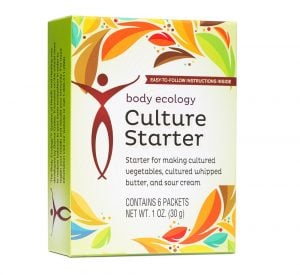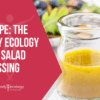Alleviating Side Effects of Cancer Therapy
Researchers at Georgetown University Medical Center have discovered that a compound in cruciferous vegetables may protect cancer patients during recovery. (1)
In animal studies, a compound known as DIM (or diindolylmethane) has been shown to protect against high—even lethal—doses of radiation. DIM is naturally found cruciferous vegetables, such as cabbage, cauliflower, and broccoli. Even some of the lesser know crucifers contain DIM, like horseradish and wasabi.
An author of the study, Eliot Rosen of Georgetown Lombardi Comprehensive Cancer Center, explains that, “DIM has been studied as a cancer prevention agent for years, but this is the first indication that DIM can also act as a radiation protector.”
Managing Side Effects of Cancer Treatment: The Protective Effect of Cruciferous Vegetables
Protective compounds found in cruciferous vegetables could help to reduce harmful cancer treatment side effects. One easy and easily digestible way to enjoy cruciferous vegetables at home is to ferment them yourself with a Veggie Culture Starter.
During recovery, many cancer patients receive radiation therapy. Radiation therapy kills cancer cells or prevents them from growing. It also kills normal, healthy tissue. According to research, DIM may counteract this. At Georgetown University, researchers injected rats with lethal doses of gamma ray radiation. Then, 10 minutes after radiation exposure, the animals were treated with DIM every day for two weeks.
The results? Rosen says that they were stunning. “All of the untreated rats died, but well over half of the DIM-treated animals remained alive 30 days after the radiation exposure.”
As it turns out, DIM can protect the health of the animals whether the first injection is administered 24 hours before or after radiation exposure.
That’s not all.
DIM assists in the repair of damaged DNA. It may also stave off anemia and weakened defenses, both common side effects of radiation therapy.
According to the study, mice given DIM were less susceptible to:
- Reduction in red blood cells, which help oxygenate tissue.
- Reduction in white blood cells, which form the immune defense system.
- Reduction in platelets, which prevent bleeding and help repair tissue.
Why Body Ecology Loves Cruciferous Vegetables
This isn’t the first time that cruciferous vegetables have been in the scientific spotlight.
Research has found that cruciferous vegetables contain other plant compounds that profoundly support the body’s ability to heal and cleanse.
For example, isothiocyanates are a group of sulfur compounds that are naturally abundant in cruciferous vegetables. Isothiocyanates are anti-inflammatory and regulate the immune system. Studies show that this group of compounds protects the body against cancer. They also assist in the detoxification process and regulate cell death (a necessary mechanism to fight cancer). (2)(3)(4)(5)
Cooking destroys the enzymes that help to form many of the active cancer-fighting compounds in cruciferous vegetables. At Body Ecology, we recommend that everyone eat fermented cruciferous vegetables. Fermentation leaves vegetables raw—and their enzymes intact—while still making them easier to digest.
Research also shows that cruciferous vegetables enhance your body’s ability to cleanse, produce antioxidants, and fight cancer. (6)(7)(8)
Fermented Cruciferous Vegetables Made Easy
When making fermented vegetables at home, use an airtight container that is either glass or stainless steel. Mason jars work beautifully for this purpose. Air-locks are not necessary.
When fermenting at home, we always suggest using a starter culture that contains specific strains of beneficial microbes. This prevents wild and pathogenic microbes from feeding on your vegetables as they ferment.
We also suggest feeding your starter culture with EcoBloom Prebiotic. A prebiotic nourishes the starter culture and gives your batch of fermented vegetables the edge it needs to flourish.
Remember to add a pinch of Ancient Earth Minerals or Celtic Sea Salt. Good bacteria love minerals as much as we do! They thrive in a mineral-rich environment, and you can encourage their growth by giving them exactly what they need.
You can make fermented vegetables at home in 5 easy steps:
- Combine shredded vegetables in a large bowl. Good choices include cabbage, cauliflower, or kale.
- Remove several cups of this mixture and blend with enough filtered water to make “brine.” Add brine and activated starter culture back into the bowl with the shredded vegetables. Stir well.
- Pack mixed veggies down into a 1½ quart glass or stainless steel container. Use your fist, a wooden dowel, or a potato masher to pack veggies tightly.
- Fill container almost full, but leave about 2 inches of room at the top for veggies to expand.
- Roll up several cabbage leaves into a tight “log” and place them on top to fill the remaining 2 inch space. Clamp jar closed or seal with a screw-top lid.
Let veggies sit at room temperature—or 72°F—for at least three days. A week is even better. Refrigerate to slow down fermentation. Depending on the fluctuations of temperature in your home, you may need to ferment your vegetables for up to a week. You can taste them to check where they are in the fermentation process.
What To Remember Most About This Article:
Researchers have discovered that a compound called DIM (or diindolylmethane), found in cruciferous vegetables, could protect against remarkably high doses of radiation. Cruciferous vegetables like broccoli, cauliflower, cabbage, horseradish, and wasabi contain DIM.
DIM can help to repair damaged DNA and could reduce radiation therapy side effects in cancer patients, like anemia and a weakened immune system. Cruciferous vegetables are full-body superstars that contain other compounds to support healing and cleansing.
Unfortunately, cooking can destroy many of the cancer-fighting compounds found in cruciferous veggies. Fermenting cruciferous vegetables will leave enzymes intact and also make vegetables easier to digest.
You can make fermented vegetables at home with a starter culture to enjoy in as little as three days. Adding a prebiotic like EcoBloom will nourish your starter culture during fermentation; minerals like Ancient Earth Minerals and Celtic Sea Salt will help friendly bacteria to thrive.
- [product id=”1″]
- [product id=”2″]
- [product id=”21″]
- [product id=”43″]
REFERENCES:
- Fan, S., Meng, Q., Xu, J., Jiao, Y., Zhao, L., Zhang, X., … & Rosen, E. M. (2013). DIM (3, 3′-diindolylmethane) confers protection against ionizing radiation by a unique mechanism. Proceedings of the National Academy of Sciences, 201308206.
- Dinkova-Kostova, A. T. (2013). Chemoprotection against cancer by isothiocyanates: A focus on the animal models and the protective mechanisms. In Natural Products in Cancer Prevention and Therapy (pp. 179-201). Springer Berlin Heidelberg.
- Zhang, Y. (2012). The molecular basis that unifies the metabolism, cellular uptake and chemopreventive activities of dietary isothiocyanates. Carcinogenesis, 33(1), 2-9.
- Navarro, S. L., Li, F., & Lampe, J. W. (2011). Mechanisms of action of isothiocyanates in cancer chemoprevention: an update. Food & function, 2(10), 579-587.
- Cheung, K. L., & Kong, A. N. (2010). Molecular targets of dietary phenethyl isothiocyanate and sulforaphane for cancer chemoprevention. The AAPS journal, 12(1), 87-97.
- Wang, L. I., Giovannucci, E. L., Hunter, D., Neuberg, D., Su, L., & Christiani, D. C. (2004). Dietary intake of Cruciferous vegetables, Glutathione S-transferase (GST) polymorphisms and lung cancer risk in a Caucasian population. Cancer Causes & Control, 15(10), 977-985.
- Lam, T. K., Gallicchio, L., Lindsley, K., Shiels, M., Hammond, E., Tao, X. G., … & Alberg, A. J. (2009). Cruciferous vegetable consumption and lung cancer risk: a systematic review. Cancer Epidemiology Biomarkers & Prevention, 18(1), 184-195.
- Anni, H., Pristatsky, P., & Israel, Y. (2003). Binding of Acetaldehyde to a Glutathione Metabolite: Mass Spectrometric Characterization of an Acetaldehyde‐Cysteinylglycine Conjugate. Alcoholism: Clinical and Experimental Research, 27(10), 1613-1621.









